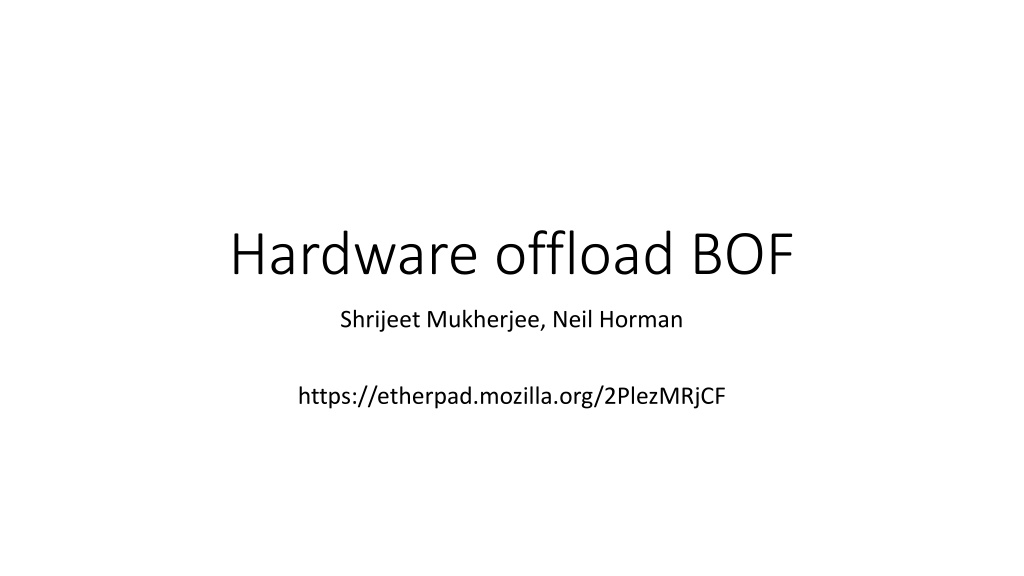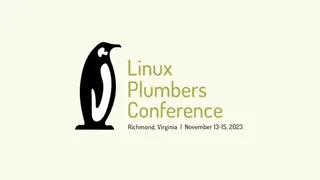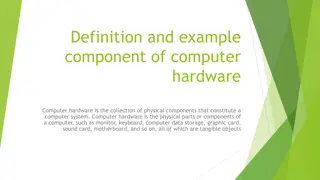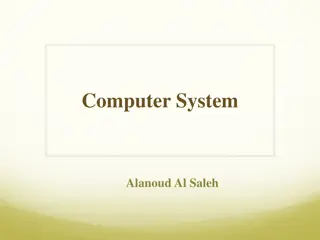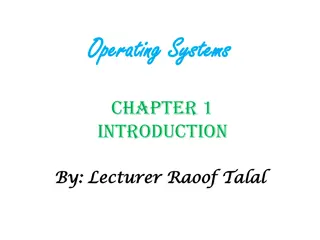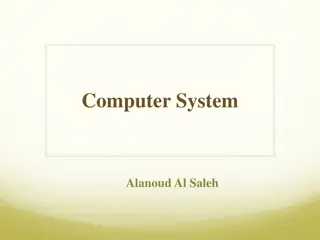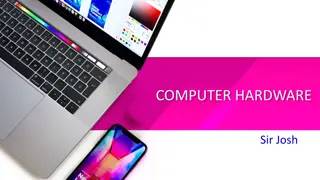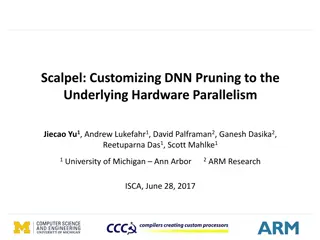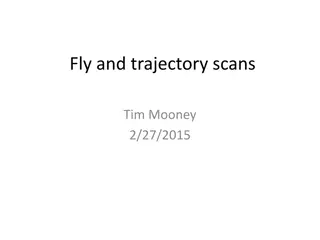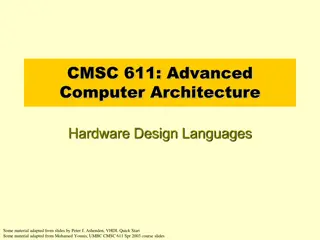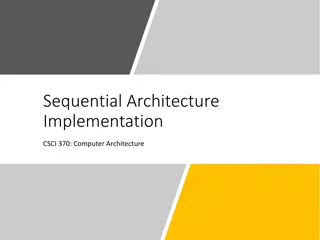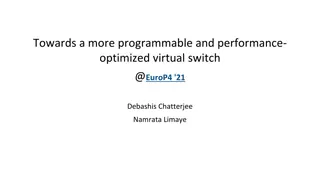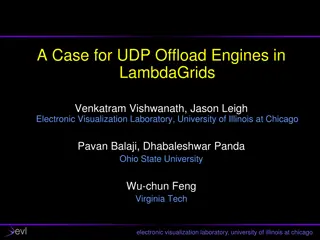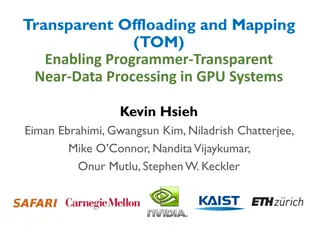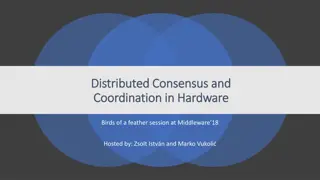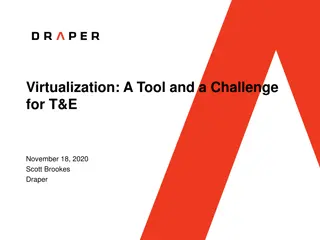Hardware Offload BoF Discussion at Netdev01
Discussion at the Hardware Offload BoF session during Netdev01 focused on preserving the Linux networking model, exchanging ideas on capability determination, and addressing challenges in emulating hardware devices in switch models. Participants explored topics such as managing devices in a generic pipeline, measuring interoperability, modeling using P4, TC schemes, and maintaining operational consistency. Key points included the need for a common feature definition, minimal policy in the kernel, and the distinction between Switch ASIC and SRIOV. The session emphasized the importance of defining common features and incorporating unique capabilities for efficient network operations.
Download Presentation

Please find below an Image/Link to download the presentation.
The content on the website is provided AS IS for your information and personal use only. It may not be sold, licensed, or shared on other websites without obtaining consent from the author. Download presentation by click this link. If you encounter any issues during the download, it is possible that the publisher has removed the file from their server.
E N D
Presentation Transcript
Hardware offload BOF Shrijeet Mukherjee, Neil Horman https://etherpad.mozilla.org/2PlezMRjCF
A fantasy agenda Capabilities a.Explicit list Or Query serially, punt to higher level (explicit hierarchy) Or Model each device uniquely with capability (no hierarchy) b. Need to understand this for Switch Asic versus VEPA/EVB/SRIOV nic etc Flow offload : c. Manage as discrete devices or generic pipeline How is interop measured aka how to avoid anarchy :) d. Flow API scheme [John Fastabend] d .Model using P4 [Mihai] f. TC scheme [Jiri Pirko] f . EZChip [Gilaad]
A fantasy agenda Routing tables, FDB, MDB, ACL g. Capacity indication, aka properties of tables [Roopa] h. Fine grain capability (e.g. is it sufficient to ask if multicast is supported) j. Table characteristics LPM versus Logical Hash based LPM's and practical implications Device model : (Not mutually exclusive in anyway) k. Maintaining operational consistency is KEY Make switch look like NIC or vice versa e.g. is learning a basic capability ? l. Model using OVS (inherently host based) m. Model using rocker [Scott] n. Switch Abstraction Interface [Sanjay] n . Intel [Uri] n . Qualcomm [Olivari]
A fantasy agenda Features : l3 offloads acl offloads [Pablo] o. Load Balancing p. Bonding ++ (MLAG and friends) q. Stateful packet processing [Hannes]
Etherpad output Hardware offload BoF Netdev01 - Sun, Feb 15, 2015 1:00pm Major points: Preserve the Linux Networking Model Goal is to exchange ideas Capability Determination Patrick: Can the default route be removed? So that individual routes can be removed. Use route usage statistics to remove least used routes. David: Existing tools must continue to work. Signal an error if out of space, or Provide capacity initially and restrict usage to that limit Cares: Must be able to support the decisions we make Partick: A flag in the route add ??? [ed. help] Ben: Need a fairly good switch model to emulate the hardware devices. ???: The least recently used method proposed by Patrick may lead to periods of major route updates when network changes occur. With multiple routing suites each one needs to be given the capabilities (capacities) of the underlying switch Shrijeet: General agreement: minimal policy in the kernel, most in userspace Switch ASIC vs. SRIOV (NIC) Switching models Shrijeet: Do these two need to be different? Andy: Come to my talk tomorrow. Thomas: Bring all the DSA drivers onboard Gilaad: Need to define common features, plus need a way to include additional (unique) capabilities
